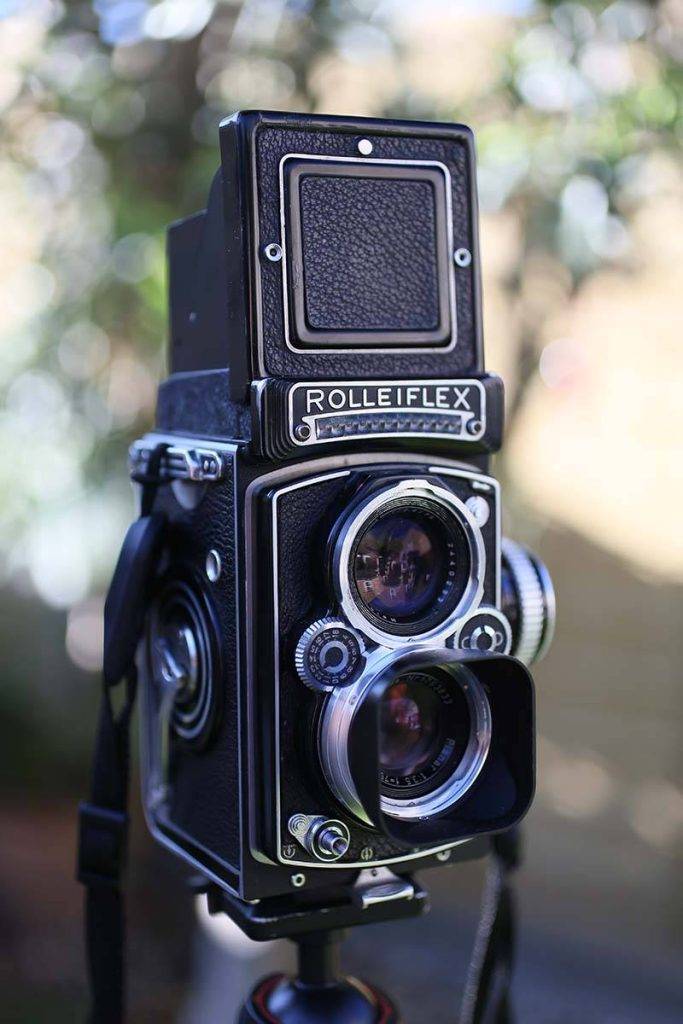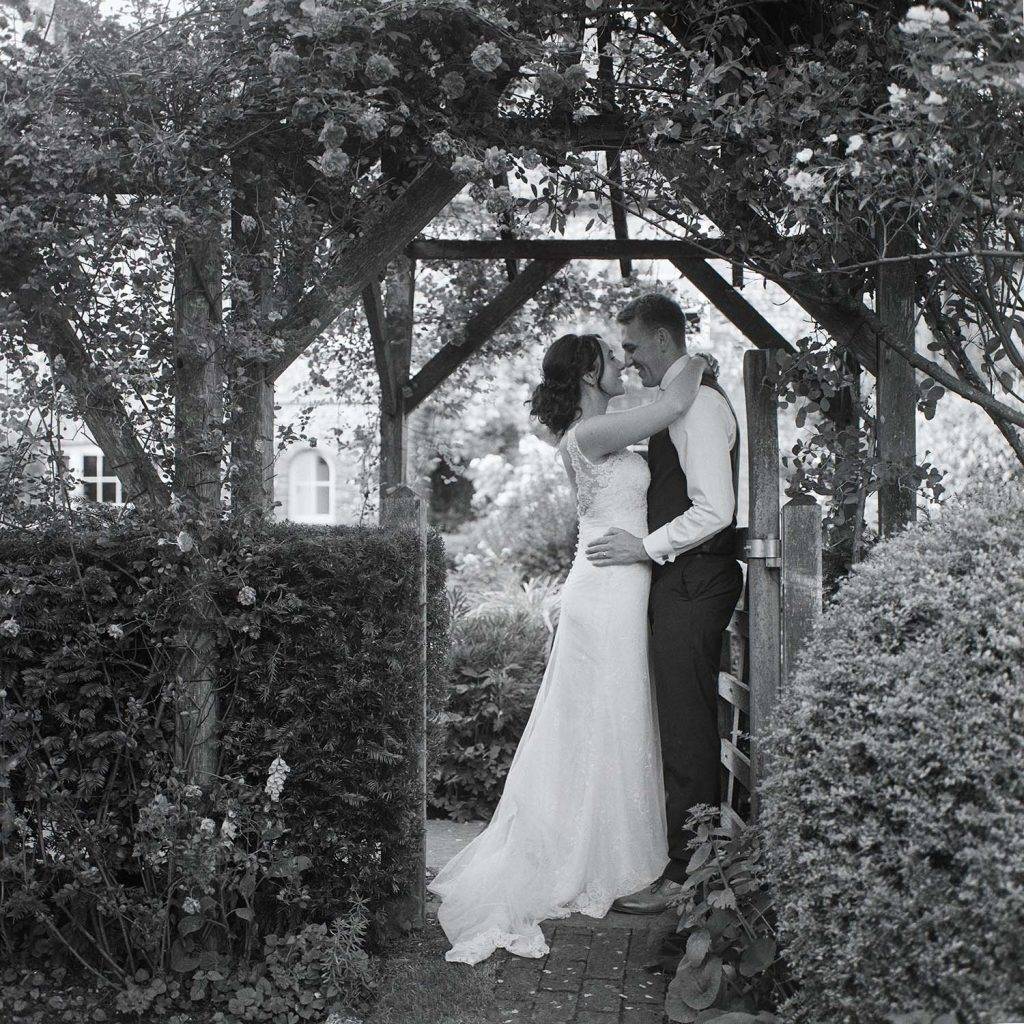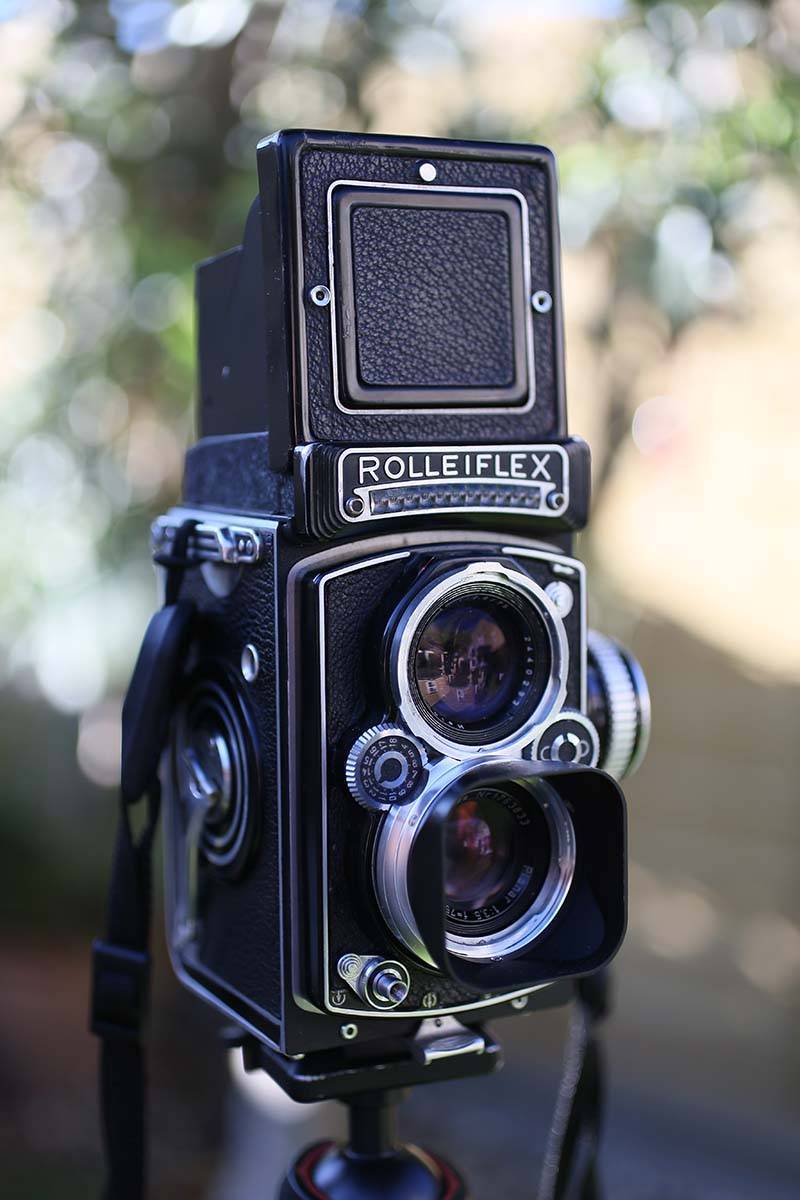
Rolleiflex 3.5C. Lightweight medium format camera with top quality Zeiss lens
I wasn’t really looking for another TLR when I came across this Rolleiflex 3.5C at a local camera shop. I already had a Minolta Autocord that I was happy with, and a Yashica 635 that I’d had for 6 months but never really used in anger. However, when I came across a nice user camera at a very good price I bought it. Not least because good deals on film cameras are getting harder and harder to come by, so if I see a good deal I tend to take it.
The Rolleiflex fitted my criteria for a walk around camera perfectly. It’s not too big and heavy, although certainly heavier than my other TLRs. It has a reputation for for excellent build quality and reliability. If it does go wrong there are specialists who can fix it and it is doesn’t rely on electronics which are the Achilles heel of most later film cameras. Above everything else though it has a reputation for excellent optical quality thanks to its 75mm Carl Zeiss Planar lens.
First Impressions
For those of you that don’t know, a Twin Lens Reflex camera design has two lenses above one another. The top lens for viewing while the lower one takes the picture. This design was a popular professionals’ choice throughout the 50’s and 60’s. The design allows for a compact but quite tall camera. The waist level finder means the image you see on the focusing screen is reversed horizontally. It also necessitates a square format so you can crop your photos produce portrait or landscape 4:5 prints later. Unlike SLR’s or rangefinders you can’t turn the camera 90 degrees to change the aspect ratio.
The Rolleiflex 3.5C I bought was made in 1956, also known as the 3.5E in American markets. It is often called a 3.5E1 by collectors now to differentiate from subsequent updates of the C/E model. It is in generally very good condition but by no means mint. The main issue that brought the price down was a couple of tiny marks on the taking lens. They are impossible to see in normal light. If you shine a light across the front of the lens they appear. I haven’t noticed any issues in real world use but I took the precaution of buying a lens hood just in case. I bought this at a reputable dealer who outlined all the faults to me. These cameras are expensive and very complicated to repair so I would be very cautious about buying one online.
Lens
This model is one of the earlier Planar lensed Rolleiflexes with an f3.5 maximum aperture. The lens is also slightly wider than the 2.8 version, 75mm instead of 80mm with the faster lens. Previous models had 4 element Tessar lenses. This camera has a 5 element Planar design for improved image quality although later models had a 6 element design. Although in theory the 6 element planar is supposed to be a better lens, in real world use you would struggle to tell the difference. Rolleiflexes can also come with Schneider Xenotar lenses which are the same design and very similar performance
The 3.5C has a fixed focusing hood and can’t take the prisms and other accessories for the later 3.5f. The camera also doesn’t have an accessory shoe so you will need an additional flash bracket if you want to connect an electronic strobe via its PC socket.
Meter
The camera has a built in light meter but it currently under exposes by about 2 stops. This seems to be a consistent error. I am sure you could use the meter if you adjusted the ISO accordingly. I prefer to use a handheld meter anyway, so it isn’t an issue for me. From what I have read online, very few Rolleiflexes of this era have accurate meters now and the selenium meter can’t be replaced. I would be very cautious about depending on a light meter this old especially if I was using an expensive film stock. The meter is a dual circuit type. There is a small switch on the nameplate which adjusts the meter for bright or dim light.
Overall the camera feels very solid and well made. It has enough weight to make it feel very steady in the hand, but you could still walk around with it all day.
This Rolleiflex takes 120 film and produces 12 6×6 images on a roll. If you don’t like shooting squares this probably isn’t the camera for you.
Camera Ergonomics
The camera controls will be familiar to anyone who has owned almost any TLR. Aperture and shutter controls are on two dials between the taking lens. They can be coupled if you want to use EV metering or kept separate if you prefer. The wind on handle is on the right of the camera. It uses the standard clockwise turn to wind the film on and a wind back to cock the shutter. The focus knob is on the left side of the camera. Viewing is through a standard, but reasonably bright waist level finder. The addition of a split prism in the centre to aid focusing is very useful. The shutter button is on the bottom right corner of the camera as you look down.
Rolleiflex 3.5C in use
The control layout of any TLR takes some getting used to if you are coming from digital cameras. I am lucky that this is my third TLR and I have owned other cameras with waist level finders. However I do think a good camera strap is essential for the control layout to really make sense. Otherwise, you can get the feeling that you are almost juggling the camera if you try to use it at speed. Your right hand has to move from winding on the camera and then to moving underneath to support the camera and press the shutter. It is much easier if a neck strap is there as security.
The downside to this of course is that if you hang your camera around you neck, your camera is very much on display. I have never liked carrying a camera like this – I feel like a tourist!. If you want to shoot candidly you might want to hang the Rolleiflex off your shoulder. Although that does compromise the handling of the camera more than you might realise.
In terms of speed of handling. The camera is a bit slower to use than a manual film SLR, but not by much. These were used extensively as press cameras and I am sure that someone who was very practised in their use could work very quickly. I suspect that is a lost skill now though.
The metal controls work precisely, even though the camera is over 50 years old. One thing to be aware of is that metal knobs can get very cold very quickly in winter weather so gloves are an essential when temperatures drop.
Personally, I do like looking down into a waist level finder and composing my pictures that way. I find that using a neck strap does help steady the camera. People do notice the camera, but I have had nothing but positive experiences from that. Most importantly, I think the capabilities of the camera and its strengths closely match my shooting style and what I like to photograph.
Film Loading
Film loading is quick and easy thanks to the Rolleiflex 3.5C automat system. When loading film you simply feed the leader through two rollers inside the camera before threading it through its reel. The roller sense when the film is in the right place and engage the interlock. No fiddling with film to align the arrows on the backing paper with the camera! The camera back is metal. The precise fit makes it light tight. There are no seals to degrade and go sticky.

Focusing the Rolleiflex 3.5C
The Rollei has bright focusing screen compared to my other TLRs. I found that the camera is easy enough to focus in most conditions. The focus action is positive with an automatic depth of field scale built in to the focus mechanism. The scale is coupled to the aperture controls so changes in depth of field are displayed as you adjust it. This is extremely useful in a camera that cannot preview depth of field in the viewfinder. There is also a mask around the focusing screen which compensates for parallax, by moving up and down as you focus. The result is you are able to focus and compose with this camera more accurately than a Yashica or a Minolta Autocord.
I have always shied away from using medium format cameras at maximum aperture because it is so easy to miss focus. I am reasonably good at focusing but hate it when your favourite picture is the one just ever so slightly out of focus. Over the years this has meant that I have always closed down my lenses by at least two stops unless I couldn’t avoid it
The only thing I found tricky with the Rolleiflex is I had to be careful with is focusing and recomposing with the split prism. When I use a 35mm camera I often use the centre prism to focus and the re-compose my image. The depth of field with a 35mm camera is usually enough to cover the slight change of focusing distance when you do this. This is not the case with the Rolleiflex. I have had more success composing and then focusing by eye using the full matte screen.
Shooting portraits with the Rolleiflex 3.5C
Almost any Rolleiflex is good for making high quality portraits as long as you can live with the near focusing distance. One thing I have found though is it is easy to hunch over the camera when composing. This has the effect of the camera being too low and shooting up at your subject. It makes more sense to consciously bring the camera up as high as you can and compose that way.

Living with the Rolleiflex 3.5C
Deciding whether you want a Rolleiflex comes down to two factors. Can you live with a fixed lens and do you like shooting squares? Personally I like using fixed lens cameras as take anywhere cameras. If I have a system camera I inevitably succumb to adding an extra lens or two ‘just in case’. I want a camera that produces good results but I can carry around all day without thinking about it. A compact camera fits the bill but I am not really a fan of smaller film formats. To me a TLR is a good compromise between weight and quality. This is a camera I use for pleasure rather than for work. Although I am sure it can give results that would stand up today against modern cameras.
The camera does have some disadvantages compared to the later Rolleiflex 3.5F. The main two being that the meter on the 3.5F is integrated into the camera – with the C you read a number from the meter and transfer it to the camera. The second disadvantage is the waist level finder is not removable so you can’t replace it for a prism or other finder. The later 3.5F models are also 20 years younger than this camera. Although easily old enough to have had a very hard life and need repair.
I think a more integrated meter design would be nice, but with so many of the meters inaccurate now it is something of a moot point. I don’t think I would ever use this camera with a prism, it would add a lot of weight for not much gain.
All in all I am very happy with my Rollei and look forward to producing some great images with it!
My Film Photography Portfolio

I’ve used Rolleiflex 1984-2006, a 1933 model bought for £50. Only put E6 film through it. After dropping it, it jammed and I got a Hasselblad 500CM and 80mm f2.8 Planar. Cannot see much difference between the transparency. I later sold the Hasselblad as I was afraid of monstrous repair bills if it malfunctions. I’ve now got a Rolleicord Va (next to the last model of the’ order. Mines made 1960. Still a very capable camera.
120 size films still widely available in many film stocks. I like FP4. I’m going to start home developing mine. David Bailey and the late Lord Snowden were prolific users of the Rolleiflex. Jane Bown started out with one.
Nice review. I too have a Rolleiflex 3.5E with a Xenotar lens. Recently I purchased a late model 3.5F with a Planar lens. This cost almost 3 times as much as the 3.5E. I could see no difference in the quality of the negatives, so I returned it! Also the coupled meter of the F models is a minor advantage over the E series. Does your Rolleiflex take better photos than your Minolta Autocord? Mine doesn’t. But the Rollei is a nicer camera. Incidentally ask a camera repair man what he thinks about Yashica TLRs. Regards, Mark.
Yes, I have heard stories of repairmen taking apart Yashicas to find that some gears were made of old tin cans!